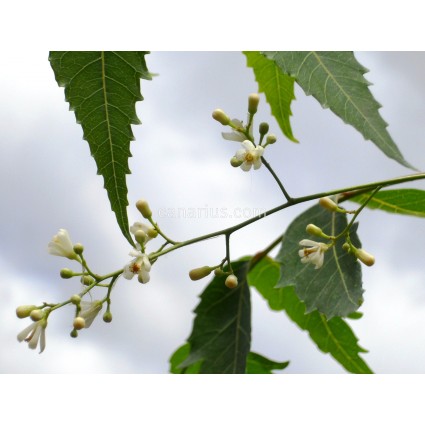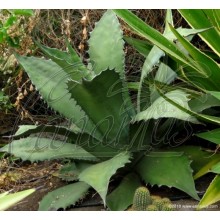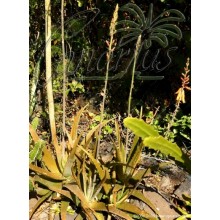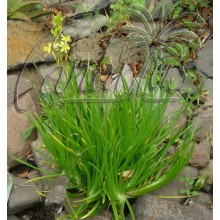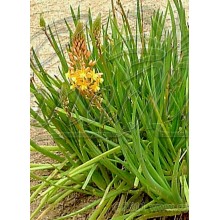Azadirachta indica - Neem Tree - Injertado
Incredibly useful tree. Its leaves are both an insecticide and a healthy vegetable, widely eaten in Asia and used for health. It is very important for ecological agricolture. Leaves and most of its parts
Nuevo
Grow the Neem Tree
Azadirachta indica is an incredibly useful tree, with bold dark-green pinnate leaves. It is a fast-growing large tree, up to 20 m tall but it can be grown in large pots and can be kept as a shrub. It sheds leaves in winter.
What is it used for?
Ir was declared the Tree of the 21st century by the United Nations. In India, its most popular names mean "Life giving tree", Village Pharmacy" and "Holy tree".
Its leaves are both an insecticide and a healthy vegetable, widely eaten in Asia, both as food and medicine. Young leaves are boiled, steamed, used in raw salads or chewed raw. Neem oil is used for incredibly different purposes, such as oil for body massages or agricultural insecticides !
Azadirachta indica is very important for ecological agricolture. Leaves and most of its parts can keep many pests under control. Even the unprocessed dry leaves will keep mealybugs under control y mixed up with the soil.
In traditional India, the neem is an ancient multipurpose cure, due to its reputedly antibacterial, antifungal, antiviral, antihistamine and antiseptic properties. Leaves, flowers, seeds, roots, bark and fruits are there used to treat inflammation, infections, skin diseases and for dental care. Neem has been widely used in India for about 5000 years.
In modern research, Neem showed activity against bacteria, viruses, fungi, skin diseases. It is also useful as a treatment for major diseases that we cannot resume here.
Just browse the internet and read more. Be careful, not all useful plants are edible, some are toxic if eaten or applied to the skin.
How large are the plants for sale?
We ship worldwide a 1 years old plant, about 40-70 cm tall. It sheds leaves in winter, so don't be scared if the tree is leafless in the colder months.
| Cultivada | Protegido |
| Origen de la especie | Europa |
| Forma presentación | En maceta (mezcla de sustratos) |
| Familia Botánica | Meliaceae |
| Tipo de planta | Leñosa |
| Cuidados | Maceta |
| Forma | Árboles |















